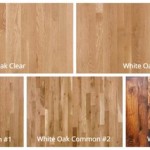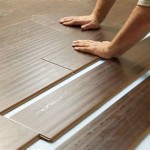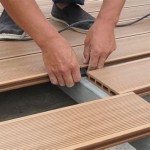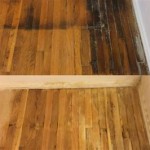Oak Flooring Widths: A Comprehensive Guide
Oak flooring is a popular choice for homeowners due to its durability, aesthetic appeal, and versatility. One crucial decision when selecting oak flooring is the width of the planks. The width significantly impacts the overall look, feel, and even the perceived size of a room. Understanding the different widths available and their respective advantages and disadvantages is essential for making an informed decision.
Oak flooring widths are typically categorized into three main groups: narrow strip, standard plank, and wide plank. These classifications are not rigid, and the specific measurements can vary slightly between manufacturers. However, these categories provide a useful framework for understanding the range of options available. Each width offers a distinct aesthetic and functional benefit, influencing the room's atmosphere and affecting installation considerations. Furthermore, understanding the impact of width on factors such as cost and maintenance is beneficial for choosing the right oak flooring for a specific project.
Narrow Strip Oak Flooring
Narrow strip oak flooring generally refers to planks that are less than 3 inches wide. Common widths include 1 ½ inches, 2 inches, and 2 ¼ inches. This width was historically prevalent and continues to be a viable option for specific design aesthetics. The narrow strips create a busy, linear pattern, which can add visual interest to a space.
One of the key advantages of narrow strip flooring is its affordability. Due to the more efficient use of lumber, narrow strips tend to be less expensive than wider planks. This cost-effectiveness can make it an attractive option for budget-conscious homeowners. Furthermore, narrow strips are often easier to install, particularly in rooms with complex layouts or numerous corners. The smaller size of the planks allows for greater flexibility and reduces the need for cutting and waste.
However, narrow strip flooring also has its drawbacks. The busy pattern can sometimes make a room appear smaller or more cluttered. This effect is particularly pronounced in smaller rooms or rooms with intricate architectural details. Additionally, the numerous seams between the narrow strips can be more susceptible to moisture damage, requiring careful sealing and regular maintenance.
From a design perspective, narrow strip flooring often lends a more traditional or formal aesthetic. It can be a suitable choice for historic homes or spaces where a classic, understated look is desired. The repetitive pattern adds a sense of rhythm and continuity, creating a cohesive and timeless feel.
Standard Plank Oak Flooring
Standard plank oak flooring typically ranges from 3 to 5 inches in width. These widths offer a balance between the narrow strips and the wider planks, providing a versatile option that can complement a variety of interior styles. Common widths in this category include 3 ¼ inches, 4 inches, and 5 inches.
The primary advantage of standard plank flooring is its versatility. This width is neither too busy nor too sparse, making it suitable for a wide range of room sizes and design aesthetics. It strikes a balance between visual interest and a clean, uncluttered look. Standard plank flooring is also often more readily available than either narrow strip or wide plank options, providing homeowners with a wider selection of wood species, grades, and finishes.
Another benefit of standard plank flooring is its ease of maintenance. While it still has more seams than wider planks, the spacing is less dense than narrow strip flooring, reducing the risk of moisture damage and simplifying cleaning. The moderate width also contributes to the overall stability of the floor, minimizing the potential for warping or cupping.
From a design standpoint, standard plank flooring offers a neutral canvas that can be adapted to various styles. It complements both traditional and contemporary interiors, providing a timeless and adaptable foundation for any space. It avoids the potentially overwhelming pattern of narrow strips while offering more visual interest than extremely wide planks.
The cost of standard plank flooring generally falls between narrow strip and wide plank options. It represents a good value for homeowners seeking a balance between affordability and aesthetic appeal. The installation process is also relatively straightforward, making it a suitable option for DIY projects or professional installation.
Wide Plank Oak Flooring
Wide plank oak flooring typically refers to planks that are 6 inches or wider. These planks have become increasingly popular in recent years, offering a modern and luxurious aesthetic. Common widths range from 6 inches to 12 inches or even wider, depending on the source and availability of the lumber.
One of the main advantages of wide plank flooring is its ability to create a spacious and airy feel. The fewer seams between the planks make a room appear larger and less cluttered. This effect is particularly pronounced in smaller rooms, where wide planks can visually expand the space. The broader surface area of each plank also showcases the natural grain and character of the wood, adding a touch of elegance and sophistication.
Wide plank flooring also offers superior stability compared to narrower options. The wider the plank, the less likely it is to warp or cup due to changes in humidity. This stability is particularly important in areas with high moisture levels or significant temperature fluctuations. The reduced number of seems also minimizes the potential for squeaking or movement.
From a design perspective, wide plank flooring lends a modern and upscale aesthetic. It complements contemporary and rustic interiors, adding a touch of warmth and natural beauty to any space. The larger planks showcase the unique character of each piece of wood, creating a floor that is both visually stunning and environmentally friendly. The style tends to lean toward a more relaxed and less formal atmosphere.
However, wide plank flooring also has its drawbacks. It is generally more expensive than narrower options, due to the greater amount of lumber required and the more careful selection process. The installation process can also be more challenging, requiring specialized tools and skills. The wider planks are heavier and more difficult to handle, and the subfloor must be perfectly level to prevent issues with stability.
Furthermore, wide plank flooring may not be suitable for all room sizes or layouts. In very small rooms, the large planks can sometimes feel overwhelming or out of proportion. It's important to consider the overall scale of the space and the intended design aesthetic before choosing wide plank flooring.
Another consideration is the availability of wide plank oak flooring. Due to the increasing demand and the limited supply of wide logs, some species and grades may be more difficult to find or more expensive to acquire. It's important to research the available options and work with a reputable supplier to ensure that the chosen flooring meets the project's requirements.
In addition to the standard widths, it's also possible to custom-order oak flooring in specific dimensions. This option allows homeowners to create a truly unique and personalized floor. Custom widths can be particularly useful in older homes with irregular layouts or architectural details. However, custom orders typically involve longer lead times and higher costs, so it's important to plan accordingly.
Ultimately, the choice of oak flooring width depends on a variety of factors, including budget, room size, design aesthetic, and personal preference. By carefully considering these factors and understanding the advantages and disadvantages of each width, homeowners can make an informed decision that will enhance the beauty and value of their homes.
When considering oak flooring widths, homeowners should also take into account the grade of the wood. The grade refers to the amount of knots, color variation, and other natural characteristics present in the wood. Higher grades, such as select and better, typically have fewer imperfections and a more uniform appearance. Lower grades, such as rustic or character grade, have more knots and color variation, which can add to the overall aesthetic of the floor. The grade of the wood can influence the choice of width, as wider planks may showcase more of the wood's natural character.
Another important consideration is the finish of the oak flooring. The finish provides a protective layer that enhances the durability and appearance of the wood. Common finishes include polyurethane, oil-based finishes, and water-based finishes. The finish can affect the color, sheen, and texture of the floor, so it's important to choose a finish that complements the chosen width and the overall design aesthetic.
Finally, it's essential to ensure that the subfloor is properly prepared before installing oak flooring. A level and stable subfloor is crucial for preventing issues with warping, cupping, or squeaking. Any imperfections in the subfloor should be addressed before installation to ensure a smooth and long-lasting floor. The type of subfloor also influences the installation method, with different methods being suitable for concrete, plywood, or other types of subflooring. Consulting with a professional installer is advisable to ensure proper subfloor preparation and installation.

Random Width Classic Oak Hardwood Floors

Flooring 101 Choosing The Right Width For Your Wood Floor Carlisle Wide Plank Floors

Flooring Grading And Sizes

What Size Does Wood Flooring Come In And Beyond Blog

Mixed Width Classic Oak Hardwood Floors

Flooring 101 Choosing The Right Width For Your Wood Floor Carlisle Wide Plank Floors

Random Width Engineered Oak Makes A Statement In Beckenham

Oak Solid Prefinished Stained Caraway Random Width Planet Hardwood

Varied Hardwood Sizes Make For Unique Installs Features Floor Covering Weekly

Wide Plank Red Oak Hardwood Flooring Vermont
Related Posts








